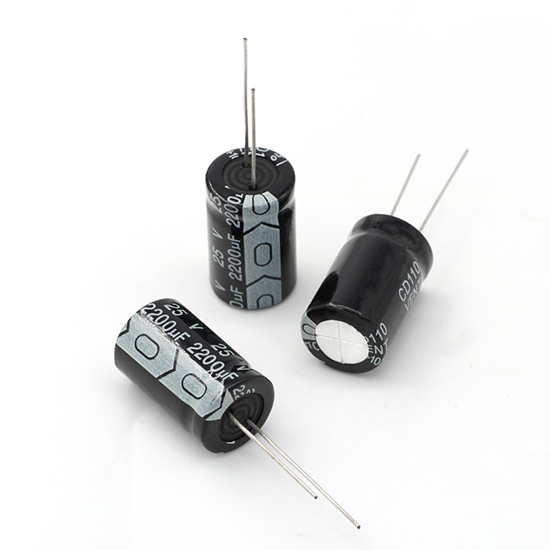Electrolytic Capacitor vs. Ceramic Capacitor
Capacitors are components used to store and hold electric charge. Capacitors are indispensable in circuits. It is divided into many types according to different conditions such as materials and characteristics. Today we will talk about electrolytic capacitors and ceramic capacitors, and briefly introduce the difference between electrolytic capacitors and ceramic capacitors.
What is an Electrolytic Capacitor?
Electrolytic capacitors are a kind of capacitors. The metal foil is the positive electrode (aluminum or tandem), the oxide film (aluminum oxide or molybdenum pentoxide) that is close to the positive electrode is the dielectric, and the cathode is made of conductive materials and electrolytes (the electrolyte can be liquid. or solid) and other materials together, because the electrolyte is the main part of the cathode, the electrolytic capacitor is named after it. At the same time, the positive and negative electrolytic capacitors should not be wrongly connected. Aluminum electrolytic capacitors can be divided into four categories: lead-type aluminum electrolytic capacitors; horn-type aluminum electrolytic capacitors; bolt-type aluminum electrolytic capacitors; solid aluminum electrolytic capacitors.

What is a Ceramic Capacitor?
A standard ceramic capacitor is a capacitor that uses a ceramic material as a medium, coats a layer of metal film on the surface of the ceramic, and then sinters it at a high temperature as an electrode. It is usually used in highly stable oscillation circuits as a loop, bypass capacitor and pad capacitor.

Differences between electrolytic capacitor and ceramic capacitor
There are many types of capacitors, and ceramic capacitors and electrolytic capacitors are the most demanded capacitor types. However, there are some differences between these two types of capacitors.
- Ceramic capacitors are mostly used in high frequency and ultra-high frequency circuits such as oscillation frequency selective coupling and feedback. Ceramic capacitors have good high-frequency characteristics and good stability. They are the most commonly used capacitors in high-frequency circuits, with capacities ranging from 0.5 microfarads to several thousand to tens of thousands of microfarads!
- Electrolytic capacitors are usually two metal foils separated by electrolytic paper and then rolled into a barrel. The two foils lead out two electrodes, which are generally larger and have larger capacity. They are generally polar and used at lower frequencies. . Porcelain capacitors are made of porcelain, usually smaller and used at higher frequencies.
- Electrolytic capacitors have large capacity, but are not resistant to high voltage, have unstable capacity, and have a short lifespan. They are used in low-voltage and low-frequency circuits. Ceramic capacitors have small capacity, high withstand voltage and good stability, and are used in high-voltage and high-frequency circuits. The structure and characteristics of electrolytic capacitors and ceramic capacitors are very different! The former has low-frequency characteristics with extremely large capacity, and the latter has high-frequency characteristics with infinitely small capacity. Electrolytic capacitors are mostly used in audio and low-pass circuits such as coupling, filter decoupling, etc. The capacity is mostly a few picofarads to 0.1 microfarads.
- The difference between electrolytic capacitors and ceramics and other capacitors is that their processes are different, resulting in different characteristics in certain aspects, so they are suitable for a specific purpose. For example, in practice, the capacity of electrolytic capacitors is relatively large, and the capacitor capacity required for power supply filtering is large, so there is no other choice for filter capacitors, and only electrolytic capacitors can be selected.
- However, since the electrolytic capacitor is rolled up by paper, it is equivalent to a coil, so there is an inductive reactance component in it. In the high-frequency field, its characteristics are closer to inductance, so a small ceramic capacitor should be connected in parallel to give a high-frequency one. path. Ceramic capacitors, the dielectric is ceramic, the dielectric loss is small, and it is suitable for high-frequency circuits, but because the relative area is small, the capacity is generally not large. In order to give full play to the advantages of ceramic capacitors, monolithic capacitors were invented, which took advantage of the advantages of ceramic capacitors and made the capacity larger.
These are the differences between ceramic capacitors and electrolytic capacitors. Under such a difference, the application range of these two kinds of capacitors has a certain difference. The above is a detailed analysis of the difference between electrolytic capacitors and ceramic capacitors. The biggest difference between the two is the difference in capacity and pressure resistance.

